Life of an eBay Super Seller
May 16, 2024
I thought it would be fun to highlight a career in the circular economy, that of my friend Jacqui Hoffman. She and her husband own an eBay store called Hudson Resale. What they started as a hobby over four years ago has turned into their full-time business. They have over 11,000 items meticulously organized in their converted garage.
The way they work is to source (go shopping) on certain days at certain local thrift and charity shops, yard sales, etc. They know all the good spots and all the annual events. They also have figured out over time what sells best in their shop and achieves the margin they need to make a piece viable for their store. They focus primarily on quality American brands like L.L. Bean, Ralph Lauren and EILEEN FISHER. Jacqui especially is always on the lookout for natural fibers like cotton, linen, silk, wool and cashmere. She and I worked together at EILEEN FISHER, Inc for many years and before that she worked at other fashion companies, so she definitely understands design and quality.
They bring all of their purchases back to their house and the pieces go into the queue, depending on seasonality. They have a laundry and steaming area and one full time employee who helps process, clean and prep the clothing for photography. As part of the product photography each item gets an inventory number and is then folded, put into a bag, and entered into inventory. They currently employ two virtual assistants who create drafts of each item in their eBay store, and Jacqui and her husband proof those and publish them daily. Each time I visit their house I inevitably hear an old-school cash register “cha ching” from the eBay app at some point, which means something has sold. They ship every day and that includes picking, packing and a daily run to the post office. That’s their business in a nutshell.
I am still amazed each time I talk to Jacqui that they have been able to replace their full-time corporate salaries with this business. I love how creative and methodical they have been to create this livelihood for themselves that is extremely flexible.
I have written about software and other technological advances designed for supersellers (like ribbn), but so far they have been able to run their whole business with the analytics provided by the eBay platform and simple tools in Microsoft Excel and QuickBooks to track expenses, margins, profit, etc.
Here’s a short Q+A with Jacqui and Jason:
What has been surprising about this journey ?
That neither of us has murdered the other. Seriously, back when we were both working for other people, I don't think we would have believed that someday we would work together, full time, from our house, every day. I think part of it is that we are genuinely having fun, and part is that we are pretty clear on who does what and how tasks are divided.
Did you set a goal to have this become your main source of income?
We did. After I left EF, the idea of working for another brand making more stuff that the world does not need seemed too far-fetched. After my work on the company's sustainability goals, I knew too much, I couldn't go back. While we did not instantly decide to be full time resellers on eBay, through trial and error and selling a little bit of everything in the beginning, we soon realized that there is no shortage of excess clothing and things that are well made hold onto their value. Once we studied the numbers and decided we were going to make a go of this, we treated it just like we had our jobs. We are very consistent. We list 50 new items a day, 365 days a year. We have studied the platform and we leverage everything it has to offer from the order of our product titles to marketing and promotional tools. Operationally, we have streamlined everything and anything that can be streamlined when you are dealing with 12,000 single skus.
What’s your favorite part ? What’s the hardest?
The ability for Hudson Resale to find a new home for things that would otherwise have little or no value is probably my favorite part. Most of the thrifts we work with keep things on their floors for about 90 days. The chances of someone coming into that little store during that tiny window of time, finding the piece and it being their size are pretty slim. We can take that same piece, make it camera ready and put it on the world stage that is eBay where the person who has been looking everywhere for one just like it can easily find it and have it delivered to their door a couple of days later.
The hardest part is negative customer feedback! We do our absolute best to present the items we sell as honestly and accurately as our amatuer photography skills allow and we offer free returns. Still, there are some people who don't understand the spirit of the platform. Occasionally there is a customer that you just cannot make happy or they suspect that you are trying to pull a fast one on them. It's heartbreaking and it ruins our day on the (very) rare occasion that someone ticks off that little red dot.
What about people who might want to start their own online resale shops ? Any advice?
Don't spend any money. Start with what is your house and list 1 item. The next day, list another. Consistency turns into scalability.
— Great advice Jacqui! Thank you!
Reading This Week
I’ve been listening to a great book on tape, Bet on Yourself, by Ann Hiatt. It’s about the author’s career at Amazon, Google and beyond. I’m not usually so interested in the start up tech scene for my own personal inspiration, but the way she shares her experiences and insights is fascinating to me. The title piqued my interest because it’s something I’m learning to do and want to get great at (betting on myself). It’s been a personal practice of mine to notice when I’m looking for outside confirmation or direction (which is often) and to try to stop and listen to what I think, what I want to do.
One of my biggest takeaways from this book so far is the importance of failure to move faster, failure as accelerated learning. As someone who strives for perfection subconsciously, I really love the idea of failure as a tool to help me get where I want to go. Another key takeaway has been the question, ‘Where do I want to go?’. I spent the last year just trying to get this business off the ground, and now that it is (woo!) I’m starting to look down the road and imagine what my next big goals could be.
The Untangling Circularity Podcast
Laura and I have started our new season, The Circular Journey of What We Wear. Have a listen to the first two episodes:
The Circular Journey of What We Wear: Intro to Circular Fashion
The Circular Journey of What We Wear: Takeback, Collection and Reverse Logistics
Have a great week,
Cynthia

